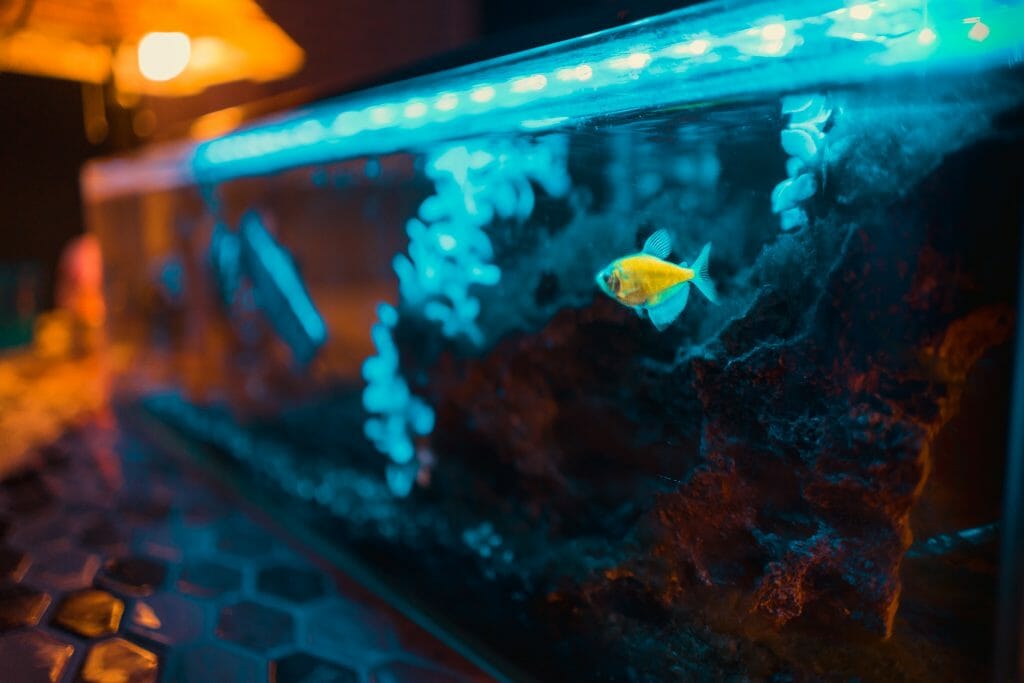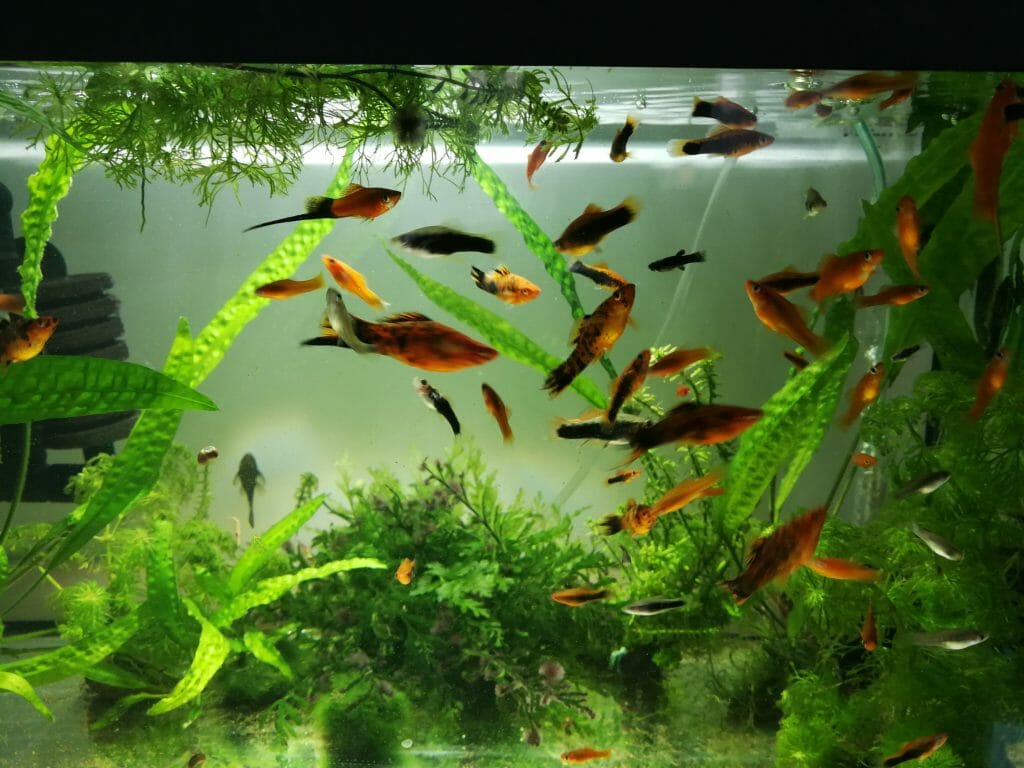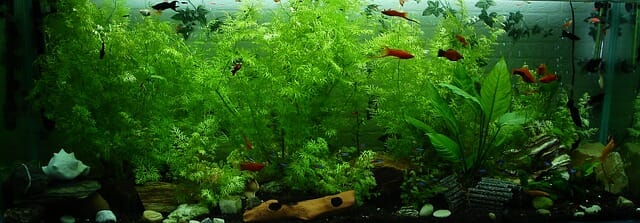How to Dim Aquarium Lights: Ways, Reason, Benefits and Factors

Adding lights to your aquarium can help create a more vibrant and colorful environment for your fish. Not only will they appreciate the added light, but the light will also promote plant growth, which in turn will provide your fish with food and other nutrients. By adding a few simple lights to your aquarium, you’ll be able to make a significant impact on your fish’s overall health and well-being!
Aquarium lights can be dimmed to give your fish a more relaxing and enjoyable experience. Dimming the lights can be done in a few different ways, depending on the light fixture used.
Table of Contents
Three Easy Ways to Dim Aquarium Lights
Usage of Lower Wattage Bulbs
There are many ways to dim aquarium lights. One way is to remove the lightbulbs from the fixture and replace them with smaller, lower wattage bulbs. Another way is to use a timer or switch to turn off the lights at certain times of the day.
Dimmers
There are a variety of dimmers available on the market that can be used with aquarium lights. These plugs allow you to reduce the brightness of your lights without having to replace them entirely. You can also use timers to turn off your aquarium light at certain times of the day. This is an easy way to keep your fish dark and relaxed at night while you sleep.
Light-Switch Timers
Another way to reduce the brightness of your aquarium lights is to use a light-switch timer. This type of timer automatically switches off your tank light at certain times, like when you go to bed. It’s an easy way to keep your fish dark and relaxed at night while you sleep.
Why Should You Dim Aquarium Lights?

Prevent Algae Overgrowth
Aquariums are a great way to keep fish and other aquatic creatures, but they can also be a breeding ground for algae. Algae overgrowth can cause your aquarium to look cloudy and green, and it cannot be easy to clean. To avoid algae overgrowth, keep your aquarium clean and well-lit.
Natural Habitat Atmosphere
There are many ways to mimic the natural habitat in an aquarium. One way is to use plants that grow in nature. Another way is to use rocks and gravel that look like they would be found in a stream or riverbed. You can also create a cave with some fake rocks or add live plants that grow in caves, such as java ferns or philodendrons.
Attain Circadian Cycle
Aquariums need some light to function, but too much light can disrupt a fish’s circadian cycle. The circadian cycle is essential for regulating a fish’s sleep and eating habits. To maintain the fish’s circadian rhythm, dim your aquarium lights at night so that they are only lightly illuminated when you are awake.
Help With Plant Growth
Water and light are essential for plant growth. Too much or too little of either can stunt a plant’s development. Dimming aquarium lights can promote plant growth by providing the correct amount of light and water.
Avoid Aquarium Overheating
When it comes to keeping fish in tanks, one of the most important factors is ensuring that the water temperature remains stable. Too much heat can cause fish to die, while too little heat can lead to a sluggish environment and low oxygen levels. To avoid tank water over-heating, keep an eye on the temperature and adjust your lighting accordingly. Dimming your aquarium lights at night can help keep the tank cool, while raising light levels during the day will help increase water temperatures.
Avoid Issues With Reflection
There are a few reasons you might want to dim your aquarium lights. Dimming can help reduce the amount of light directly emitted from the light fixture, which can help improve your fish’s health. Additionally, it can also help reduce the amount of light reflected off of surfaces in your tank, making it easier for you to see what’s happening in the tank at night.
When to Dim Aquarium Lights?
Aquarium lighting is one of the most important aspects of keeping fish healthy and happy. When to dim aquarium lights can be a difficult decision, but you can follow a few guidelines to make the decision easier. The first thing to consider is the time of day. Most fish prefer light during the daytime when they are active and eating. However, some fish species do better in darker environments at night. If you’re only keeping one or two fish, adjusting your lighting schedule may not be necessary. But if you have a giant aquarium with more than a few fish, it’s essential to consider their preferences and adjust your lighting accordingly.
How Long Should You Dim the Aquarium Lights?
When it comes to aquarium lighting, there is no one correct answer. Some people prefer to dim their lights completely, while others only reduce the brightness by a few percent. Ultimately, it depends on your personal preferences and the type of fish you have in your tank. Generally speaking, you should dim your aquarium lights for about 8 hours per day.
Factors to Consider When Dimming Aquarium Lights

Community Aquarium
A community aquarium is a great way to get started if you’re new to fishkeeping. A community aquarium allows you to share the responsibility of caring for your fish with other hobbyists. This means there will be fewer demands on your time and more opportunity to enjoy watching your fish interact in their natural environment. Community aquaria typically have lower lighting levels than traditional home aquaria, making them ideal for beginners who want an introduction to keeping tropical fish.
Fish Species
Some fish prefer brighter environments, and others prefer darker environments. Some fish species like to be kept in brightly lit tanks, while others do better in low-light aquariums. It’s essential to pay attention to the specific needs of your fish and adjust their lighting accordingly.
Planted Aquarium
If you’re planning on keeping fish in a planted aquarium, it’s essential to prepare for the increased lighting requirements. Aquarium plants need plenty of light to thrive and will require more than traditional home aquariums can provide. It’s common for planted aquaria to have brighter lights than standard tanks, up to 12 hours per day.
Invertebrates
Invertebrates, such as snails and crayfish, need light to survive. Aquarium owners who want to keep invertebrates in their tanks should have lights that provide adequate illumination. Some aquarists opt for high-brightness LED lights designed explicitly for invertebrate use, while others turn to halogen or fluorescent lamps.
Ambient Light
Some aquarists opt to introduce light from the outside into their tanks through ambient lighting. This type of lighting is typically used in public aquariums and allows visitors to see the fish inside their tanks without using artificial light.